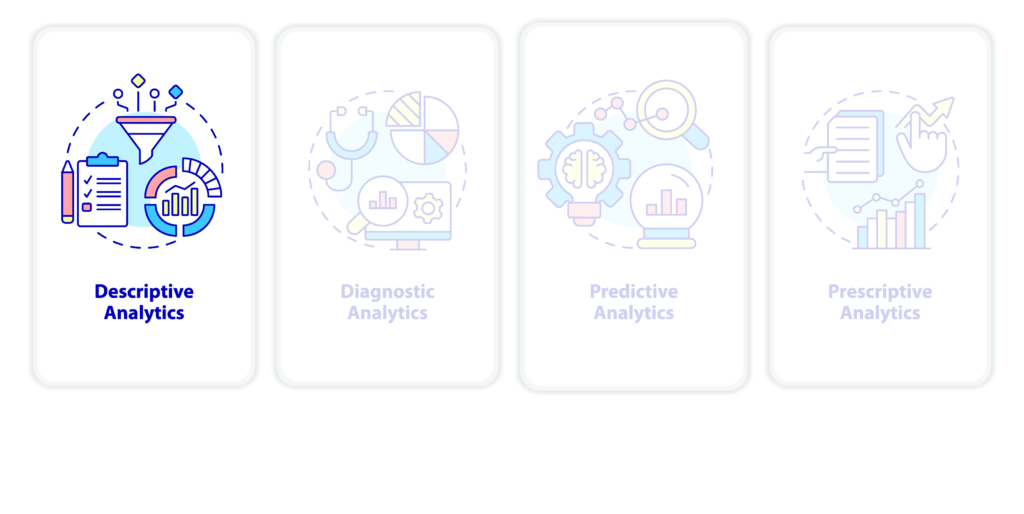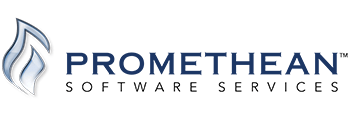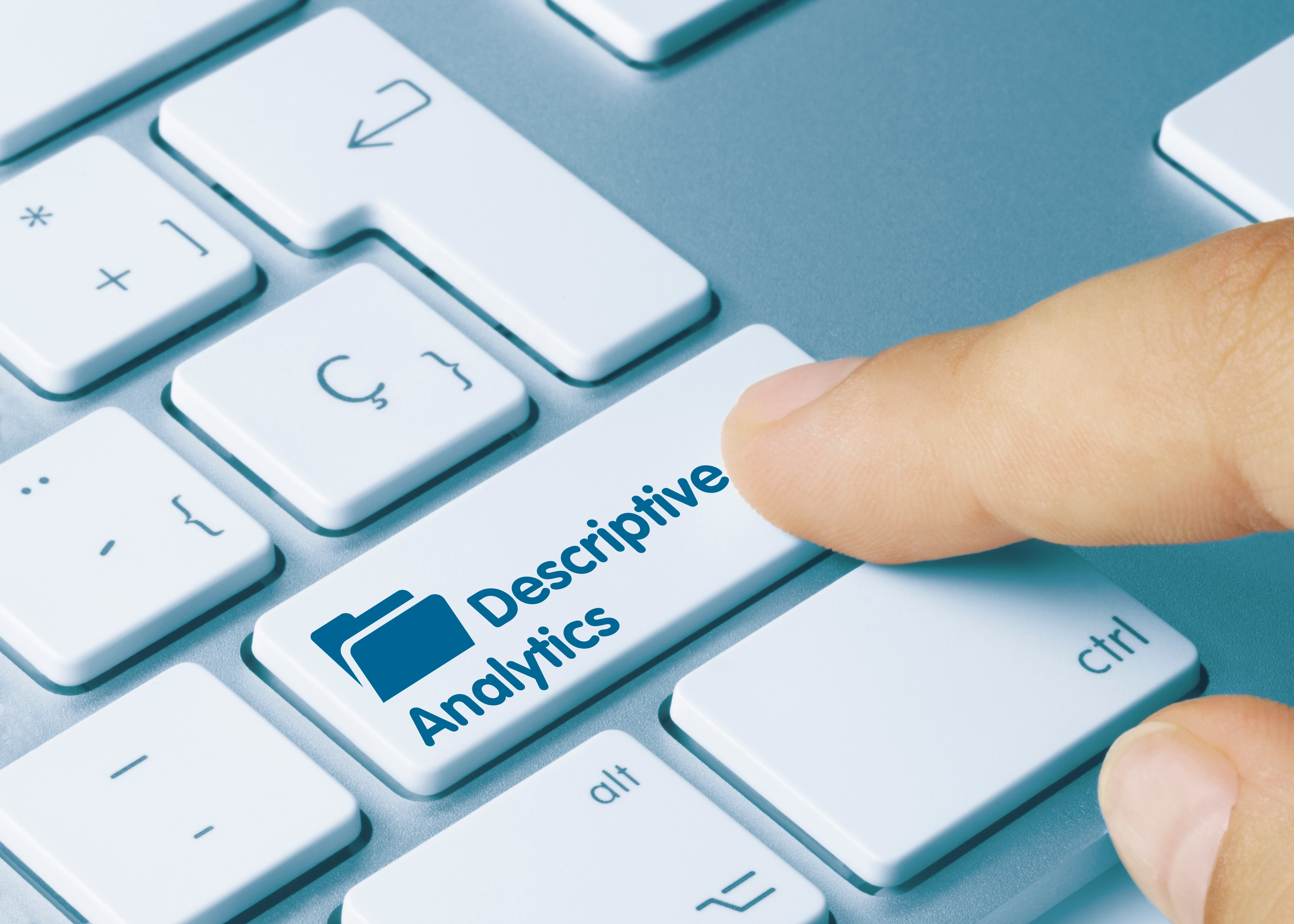Descriptive analytics is using data to answer what has happened. This makes descriptive analytics an essential aspect of every business; before deciding what is next, we need to know what has happened. Most businesses engage in descriptive analytics even if they are not consciously seeking it out. Descriptive analytics looks to answer questions about the past; How much did we make, how much did we sell, who worked the most hours, when was our busiest times last week, etc. To answer these questions effectively you must look to data. Making data driven decisions is very advantageous despite the possible barriers.
For an overview of analytics, please refer to our first article in this series: What is Data Analytics?
Advantage of Doing Descriptive Analytics
Before we explore possible inhibitors or how to do descriptive analytics it is good to know what you stand to gain. Some of the advantages of doing descriptive analytics include:
- Better Decision Making. With better information comes better decisions. The fastest way to improve the quality of, and confidence in, the business decisions you make is to improve the quality of information you are basing the decisions on. The best way to improve the quality of information is through analysis.
- Analytics is Better than Intuition. Descriptive analytics provides a nonbiased view of what happened. As impressive as our brains are, when it comes to accurately recalling complicated information, we are unreliable at our best. This fallibility is compounded upon when we are personally invested in seeing our business a certain way. This is where unbiased analytics pointing towards truth is at its most valuable. Knowing what is going on means your decisions are based in reality.
- Clear Tracking of KPIs. Key Performance Indicators (KPIs) are values that directly reflect the health of your business. How many people visit your store, what is your gross income, how much Inventory is used in a week, customer satisfaction, etc. KPIs are best utilized when you can put a numeric value to them. Numeric values are easier to measure and thus track improvements/regressions. Descriptive analytics is the means in which you track how well your business is doing.
- Provides a Jumping off Point. Descriptive analytics is best preformed when data is in a centralized database. Having data organized is essential for doing more advanced analytics. This is enticing because advanced analytics can be used to predict future values of KPIs and can suggest optimal responses. This promising future takes the same route to completion as descriptive analytics.
This is by no means a comprehensive list, but marks clear benefits that you can count on.
Barriers to Doing Descriptive Analytics
Now that we know the advantages of descriptive analytics lets pivot to looking at what is going to impede implementation and how to avoid the pitfalls. The most common barriers include:
- Accessibility of Data. Before analysis can be performed reliably, data needs to be in a structured database (Setting up this database is covered in another post: What is Data Analytics?). Enterprise data is usually stored in disparate systems. Many Line-of-Business (LOBs) applications constitute several data silos which a connection is needed for analysis. For example, to compare prospects contacted to actual orders made for the quarter, sales and accounting systems are two LOB applications from which data would have to be pulled. Considerable effort and consideration are required when preparing data for analysis.
- Time to get Started. The process of starting data collection or organizing data takes a considerable amount of time. Long wait times can be mitigated if you look to smaller data sets for initial insights. Smaller data sets are prone to larger error bars and should be held with a higher degree of skepticism but can allow for more immediate answers.
- Prior Knowledge. Analytics is a vast field covering many disciplines of math and computer programing. It’s often overwhelming trying to figure out what needs to be known before starting. Descriptive analytics is more approachable than other types of analysis. Most programs that store data will have the math functions built in and are easy to access. Despite descriptive analytics accessibility, having subject matter experts who understand the data and the business is preferable. A trained eye will make the process far more efficient and make doing more advanced analytics a nonissue.
- Resources. There can be a high price point required to effectively store and access data for analytics. Special database systems, ETL tools (Extraction, Transformation, and Loading), and physical storage costs can be real inhibitors. It is important to consult with data management experts so you know all that is needed for analysis so you can plan for the expenses accordingly.
How to do Descriptive Analytics
Once data is collected in a centralized location it’s time to look at the mathematical tools needed for analysis. The two major mathematical tools are aggregate and comparative functions. Aggregate function is a catch all term for the different ways that you can group your data; This could be adding sales over the month to get the total sales or looking at average sales done in a day. Stated explicitly, sums and averages over specified time periods are the key to aggregate functions. Likewise, comparative functions refer to any way that you can compare events in time. Examples are looking at percent differences: sales were up 13% from last month, or differences: we sold $300 less this month compared to last month. Aggregating and comparing data are the essential functions needed to do descriptive analytics.
A special class of comparative functions is trends. Calculating trends requires nuance that pushes closer to predictive analytics. Trends fall under the umbrella of descriptive analytics by answering questions about how data points were moving. When comparing more than two data points trends become necessary. Trends are calculating lines of best fit* and analyzing pertinent information in the fit parameters†. The line that gives the best bang for its buck. Looking at a straight line and seeing the slope tells the rates at which values are changing in the time frame specified. Again, there is some nuance getting glanced over we will cover in a future article on Predictive Analytics. Finding trends is essential for seeing how values have changed for your business.
*lines of best fit being a term used to describe a mathematical process of determining a line that best describes a set of data. This means finding the fit parameters that makes the line as close to as many data points possible.
†fit parameters when considering an equation for a line, are the slope and the y-intercept of the line. More generally, fit parameters are any values that you can specify that determines the shape of a curve.
Descriptive Analytics, Dashboards, & Real-Time Reporting
Real-time reporting of data via dashboard applications is another aspect of descriptive analytics. We defined descriptive analytics as using data to answers what has happened; though a better definition would be descriptive analytics is using data to answer what has/is happened/happening. The reason being the mathematical analysis is identical to answer questions about what was and what is happening. The difference lies in the software and accessibility of the data. If you are dealing with more continuous data streams, then real-time reporting is ideal. The typical way real-time data is accessed is through dashboards. Dashboards offer an interactive and intuitive way to interface with your data commonly achieved through data visualizations. Also, with a monitoring service, you can add thresholds that when reached, will report on those anomalies. We will cover in a future article how predictive analytics can be very helpful in automatically setting these thresholds.

Descriptive Analytics Start to Finish
Pulling everything together, let’s explore what this would look like from just starting out collecting data to doing the analysis.
- What Data Should I Collect? First you need to figure out what data is available to you and what data you should collect. A good place to start is trying to figure out what your KPIs are and what business questions you need answered. The data you should collect are those needed to calculate the KPIs and relevant data needed to answer your questions. An important note: you are going to be tracking this information in time. Including a date and a time on each data point collected is necessary to track its progression.
- Where/How to Store Data? Every company has different needs when it comes to data storage. Finding out the scale or expected size of your data will inform you as to what type of database to use. It is important here to plan carefully how you are going to store your data and decide early on data formatting and stay consistent. If you are working with millions of customers and millions of data points per customer, you will need plenty of storage and the expertise to handle the volume. If you are only working with a few hundred variables, then excel or any equivalent software will be sufficient. We will cover data storage and cleaning data in a future article.
- Doing Analysis. Now that the database is populated it is time to start doing analysis. Simple plots of KPIs vs. Time is an excellent place to start. Looking at targeted windows and seeing how these values move in the specified time can provide useful insights. It is important to keep in mind what questions you are trying to answer and focus your attention on values that will provide insight.
Descriptive Analytics: The Verdict
Descriptive analytics is a key to tracking the vitality of your business. Knowing what has happened is an essential step in your analytics journey. Knowing the what means you are ready to find out the why (Diagnostic analytics) or what will happen (Predictive analytics).
Not sure where to start with Descriptive Analytics? Contact us to discover how we can analyze your data and help you track how well your business is doing.

